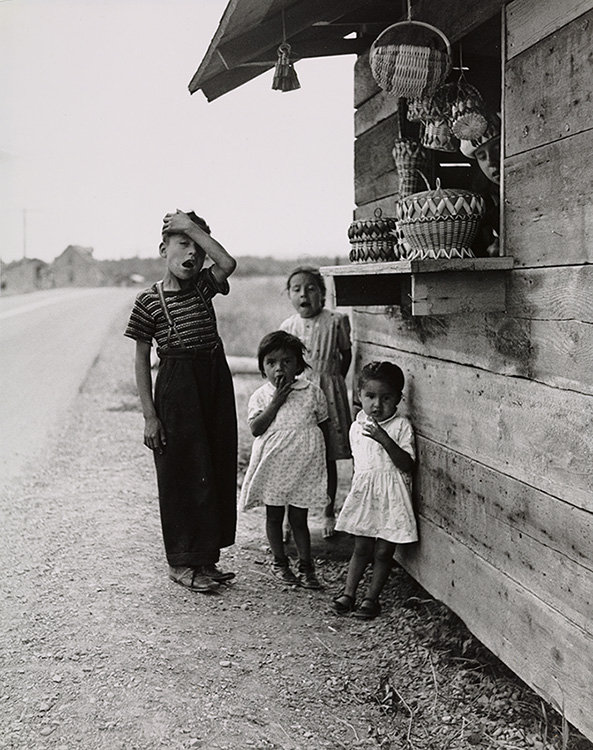The First Nations in the Gaspé

Gelatin silver print
Mi’kmaq children in front of a booth at Maria, 1950
Moser, Lida
33,9 x 26,7 cm
Musée nationale des beaux-arts de Québec
Gift of François and Didier Morelli
2017.315
© Lida Moser succession
Photo credit : MNBAQ, Idra Labrie
The first tourists to the region marvelled at the unique ability of peoples of the First Nations to build canoes and manoeuvre them on the region’s many rivers. They were much sought after as guides for those seeking to traverse the Gaspé before roads were built. They accompanied the first generation of travellers who came to the region to hunt in the forests or fish its rivers and lakes.
The First Nations communities of the Gaspé have played a prominent role in the development of tourism in many parts of the region. But in the guidebook produced in 1929 to welcome visitors, natives and native communities are barely mentioned. They are described as offering tourists an opportunity to fish for eel at l’Anse-Ste-Hélène. At Maria, visitors are invited to look for residents of the reserve (described as “braves” and “squaws”) “tilling their fields” or “tending to their daily tasks near their tidy little homes”. In later guide books, the native communities were left out altogether.
Ignored by the guidebooks, visitors often stopped to purchase baskets and other wares at roadside kiosks where the unique products made by First Nations residents were available for purchase.

